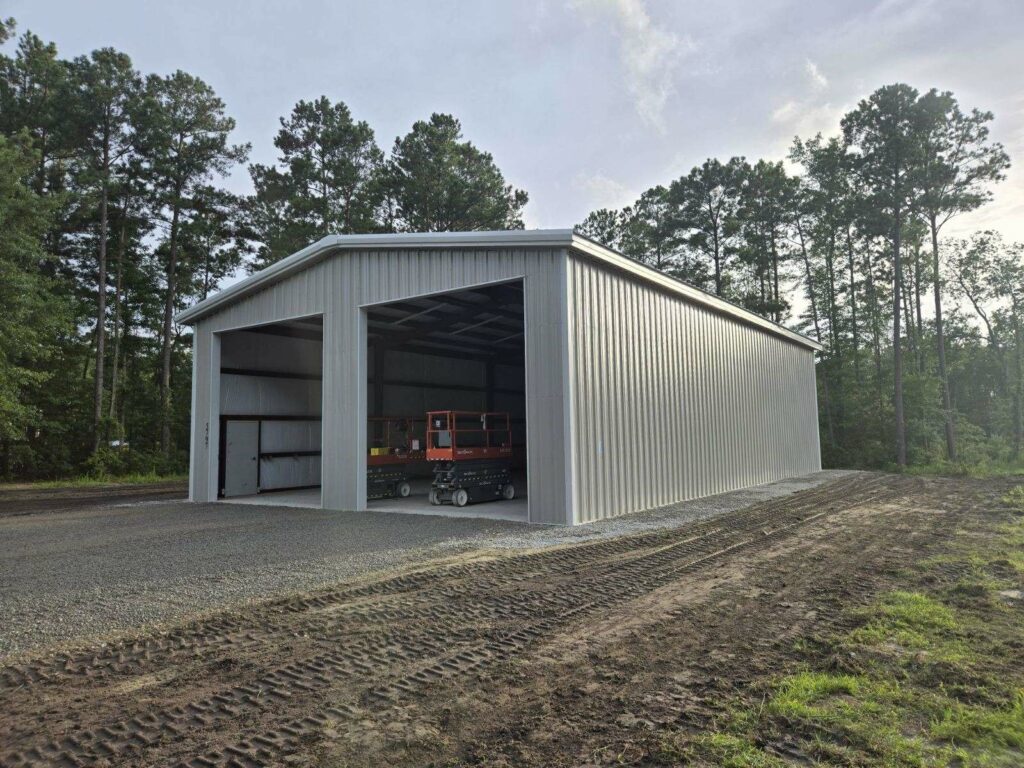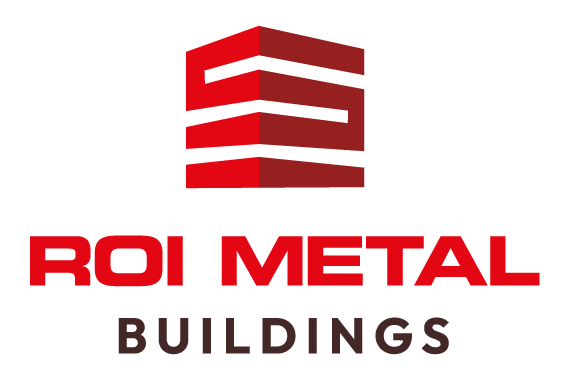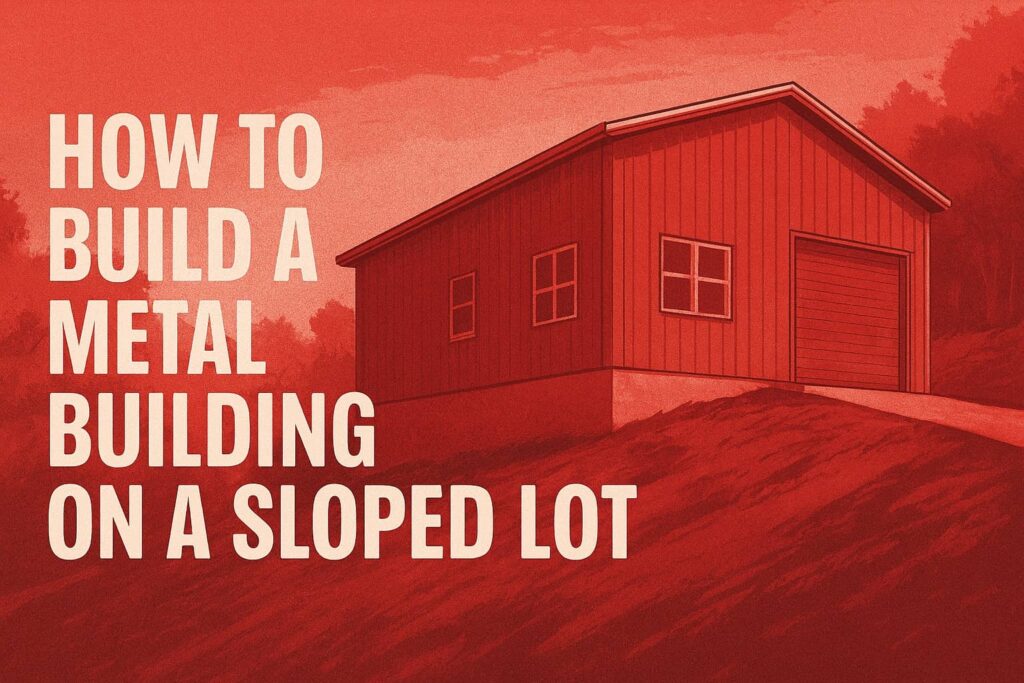Farmers often grapple with whether their barns can serve as tax write-offs—a question that stems from the high cost of keeping these essential structures in top condition. Imagine spending hours working in a barn filled with the scent of fresh hay and sounds of livestock, only to find that you’re missing out on potential savings.
Fortunately, yes, barns can qualify for tax deductions, but there are specific IRS rules to follow. We’ve digested these guidelines thoroughly to offer you a clear path forward. You might find it intriguing that not all barns meet the criteria; personal-use ones often don’t qualify. Next, we’ll dig into what does make a barn eligible for these valuable tax breaks.
This article is a quick response to our last article about the biggest tax write-offs for farmers. We got several questions from the farming industry over the last day or so asking, “can a barn be a tax write-off?” The quick answer is yes of course, but it requires more detail which is outlined below. Our next few articles will continue to help our customers maximize their tax benefits before the end of the year. If you’ve followed our articles in the past, you’ll remember that we aim to be thorough with our content and to provide as much value as possible. If you’re planning on adding a metal building to your property, look no further than ROI Metal Buildings for all of the crucial information to get started!
Yes, a barn can be a tax write-off if it is used for agricultural business purposes and meets IRS criteria for farming operations, including active cultivation and profit generation. Expenses related to the construction of the barn can typically be depreciated over 20 years for general-use farm buildings, allowing farmers to reduce their taxable income significantly.

Can a Barn Qualify for a Tax Write-Off?
Yes, a barn can indeed qualify for a tax write-off, but it hinges on meeting certain conditions outlined by the IRS. At the core of these requirements is the necessity for the barn to be utilized primarily for business operations linked to farming or agricultural activities. A structure’s purpose is key; if it plays a role in producing income and supports farming activities, it opens up eligibility for tax deductions.
For example, barns that house livestock, store feed, or hold farming equipment are generally considered eligible for deductions. These structures must be owned by the taxpayer and used more than 50% of the time for farming business operations.
The situation becomes trickier with structures that are used partially for personal purposes. In such cases, only the percentage attributable to business use can be deducted.
It’s important to note that temporary or inherited buildings might not qualify. The IRS has guidelines that specify which properties can be claimed, emphasizing active use and generation of profit from agricultural endeavors.
Additionally, the type of deduction can vary based on factors like construction cost and recovery period. Under Section 179 of the IRS tax code, farmers may deduct expenses associated with a new barn’s construction. However, instead of claiming the full expense in one year, barns are depreciated over specified recovery periods—typically 20 years for general-use farm buildings.
An interesting aspect is that under recent changes from the Tax Cuts and Jobs Act, first-year bonus depreciation rules allow agricultural businesses to claim significant portions of their construction costs in the first year if completed before January 1, 2023. Although this rate decreases over time—80% in 2023 and down through subsequent years—it still presents an opportunity for more immediate financial relief when investing in new structures.
While many barns can indeed qualify for tax write-offs under the right circumstances, adhering strictly to IRS rules and maintaining accurate records is essential for a successful claim. Keeping documentation organized and consulting with tax professionals can greatly aid in navigating this potentially complex area of tax legislation.
Transitioning from these qualifications, understanding specific guidelines set by the IRS can further clarify how agricultural operations can optimize their tax deductions effectively.
IRS Criteria for Agricultural Tax Deductions
The IRS has established specific guidelines to determine what qualifies as a legitimate farming operation when it comes to tax deductions. This careful definition aims to prevent individuals from taking advantage of these tax breaks unless they are truly engaged in agricultural activities. To start, you need to understand the definition of a farming business.
Definition of Farming Business
According to IRS Publication 225, a farming business encompasses various agricultural activities, such as cultivating crops, raising livestock, and maintaining a dairy. However, it isn’t enough just to dabble in these areas; for your operations to be considered a business, they must be continuous and pursued with the clear intent to make a profit. This means that hobby farms or sporadic activities don’t qualify. If you’re planting crops just for fun without any intention of selling them, you’re not quite in the territory of a legitimate farming business.
Next, let’s explore how your barn’s use factors into its eligibility for deductions.
Qualifying Barn Uses
For your barn to qualify under IRS criteria, it needs to be actively utilized in specific ways related to farming activities. Here are some key uses that can make your barn eligible:
- Housing livestock.
- Storing animal feed or equipment.
- Processing crops or animal products.
Think about how you utilize your barn: if it’s housing animals or keeping equipment safe, you’re on solid ground. However, using it purely as a personal garage or for unrelated storage might disqualify you from benefiting from important tax deductions.
For example, consider a barn solely designated for storing animal feed or equipment. This usage clearly meets IRS standards and can help you leverage those valuable tax benefits during tax season.
Understanding these criteria equips farmers to maintain compliance while also effectively meeting their agricultural needs and objectives. We can now examine the different types of expenses that may be deductible and the intricacies involved in navigating those possibilities.
Deductible Property and Operating Expenses
When you run a farm, it’s crucial to keep track of various expenses that can possibly be deducted for tax purposes. These deductions not only lighten your tax burden but also contribute to overall business profitability. Among these, expenses associated with your barn play a significant role.
Regular repairs and maintenance are key players in the upkeep of your barn; ensuring that the structure is sound not only adds to its longevity but also qualifies as a business expense. For instance, if you spend $2,000 on roof repairs because of storm damage, this entire amount might be eligible for deduction.
In addition to maintenance costs, mortgage interest can often be deducted if the barn was financed through a loan. If you have used financing to help establish or maintain your infrastructure, tracking the interest payments over the year could yield additional savings come tax time. Similar rules apply to property taxes—these too are deductible provided they are directly related to the barn. Proper documentation of these costs is essential; retaining invoices, receipts, and loan statements will help substantiate your claims during tax filing (or in case of an audit).
It’s worth noting that some farmers may overlook other operational expenses that contribute to their daily activities. This includes utility costs associated with heating or cooling the barn or even supplies necessary for livestock care housed in your facilities. If you buy feed specifically intended for livestock raised within the barn or cleaning supplies to maintain hygiene standards, those could also be sections of your operating budget eligible for tax deductions.
Knowing exactly what expenses can be deducted allows you to allocate more funds back into your farming operation.
Keeping everything documented and organized not only eases the filing process but ensures you’re maximizing potential write-offs effectively. As we explore further, understanding how to manage the depreciation of these valuable assets becomes equally important.
Depreciating Farm Buildings
When it comes to managing the financial aspects of owning a farm, depreciation offers significant advantages. It allows you to spread the cost of a barn or any other farm building over several years, mirroring the structure’s usage and wear during that time. Instead of deducting the entire expense all at once, this method provides a more balanced approach to claiming tax deductions, making it easier for farmers to match their operational costs with their income.
Depreciation Periods
As mentioned earlier, single-use structures typically come with a 10-year recovery period. This means that if you invest in a barn built for one specific purpose—like housing horses—you can deduct a portion of its cost each year over the next decade.
On the flip side, general-use farm buildings have a longer timeline, generally taking 20 years for full depreciation. This includes barns designed for multiple uses, such as storing equipment or grain.
The classification of your barn is important because it directly influences your ability to recover those expenses through tax deductions. For example, if you invested $100,000 in a general-use barn, you will only be able to deduct around $5,000 per year for two decades. This slower accrual means careful planning is necessary to ensure your cash flow accommodates those longer deduction periods.
Likewise, consulting with a tax professional can provide insights into how best to categorize your barn based on its intended use and get the largest potential benefits.
When determining depreciation, remember these categories have implications beyond immediate tax benefits—they also affect future sales and asset valuations.
Additionally, don’t forget about bonus depreciation options that may apply to your investment when certain conditions are met, allowing for even faster write-offs in some circumstances.
First-Year Bonus Depreciation Explained
The introduction of first-year bonus depreciation under the Tax Cuts and Jobs Act has revolutionized how farmers can manage their tax obligations. Essentially, this provision allows them to write off a significant percentage of qualifying assets, like farm buildings, in the year they are placed in service.
As of 2024, new farm structures completed before January 1, 2023, can benefit from a whopping 100% bonus depreciation, a substantial advantage for those investing heavily in their farming operations.
This means that if you construct a barn for $100,000 in 2023, you could potentially write off the entire amount as a first-year deduction. It’s important to note that this generous allowance will gradually decrease in subsequent years. In fact, the bonus depreciation rate is set to reduce to 80% in 2024 and further down the line. This gradual reduction emphasizes the urgency for farmers and landowners to utilize this opportunity while it lasts.
“Taking advantage of bonus depreciation now provides an unparalleled chance to enhance cash flow and invest back into the farm.”
Furthermore, understanding how to navigate these tax regulations can yield significant savings. Eligible properties not only include new constructions but also used structures that meet specific criteria set by the IRS. Thus, even if you are considering purchasing an existing barn that may need some refurbishment, it might still qualify under these bonus rules provided it is deemed a “qualified property.”
Strategically planning your construction or acquisition of eligible assets can lead to immediate financial relief. If you are anticipating major expenditures on your farm facilities, it’s prudent to consult with a tax professional who can provide guidance specific to your situation. They can help you understand any additional details or required documentation necessary for claiming such deductions.
In making informed decisions about tax deductions related to barn investments, it’s essential to dive deeper into the specifics of equipment and utility write-offs that can further optimize your financial strategy.
Claiming Equipment and Utility Deductions
Running a farm often involves significant investment in various equipment and utilities that are essential for daily operations. Fortunately, many of these costs can be claimed as tax deductions, which can help ease the financial burden. Items such as tractors, feed mixers, and livestock equipment used in collaboration with your barn’s operations are deductible. For example, imagine purchasing a new tractor for $50,000 specifically to transport feed around your property: that full amount could potentially be deducted from your taxes.
Equipment Deduction
The key to successfully claiming equipment deductions lies in understanding what qualifies under IRS guidelines. Generally, any machinery or device that depreciates over time and is used for agricultural purposes can be eligible. This includes not only hefty equipment like tractors but also smaller tools like handheld sprayers or even computers used for farm management. It’s important to maintain records of purchase invoices as proof of your expenditures because proper documentation can save headaches later when it comes time to file your taxes.
When you’re acquiring new equipment, consider timing it strategically around your fiscal year end. If you make a significant purchase close to the end of the year, you may qualify for first-year bonus depreciation, allowing you to write off the entire cost in one lump sum. Doing this effectively helps cash flow management while maximizing your deductions.
Utility Costs
Beyond just the physical equipment, utility costs play a critical role in maintaining barn operations and they too can be deducted on your taxes. This includes electric bills, water usage, gas expenses, and even heating costs during colder months when the barn is operational. However, only expenses directly associated with farming activities qualify for deductions. Therefore, if you’re using utilities for both personal and commercial purposes—say, heating a riding arena alongside the barn—you’ll need to allocate those costs adequately.
It’s recommended to maintain meticulous records of all utility expenses. Regularly document monthly bills and note the percentage of usage that benefits farm activities versus personal use. This level of detail is crucial during audits or when filing claims since it provides transparency in how deductions were derived.
Understanding these key aspects of claiming equipment and utility deductions equips you with valuable insights as you move forward in managing your farming finances. The next step involves navigating essential paperwork and maintaining organization in your financial records.
Essential Tax Forms and Record Keeping
Precise records are not just beneficial; they are crucial when claiming deductions related to your barn and agricultural activities. Having accurate documentation can save you from potential pitfalls if your tax return catches the attention of the IRS. Think of it this way: your paperwork is your safety net, providing evidence of compliance while maximizing deductions.
Key Forms
To navigate this landscape effectively, familiarize yourself with these essential tax forms:
- Form 4562: This form is used for reporting depreciation and amortization. It allows you to spread the cost of larger purchases over time, significantly reducing your taxable income.
- Schedule F (Form 1040): This is where you report farm income and expenses. It’s crucial to fill it out accurately to reflect the financial state of your farming operations.
- Form 8824: If you engage in like-kind exchanges—trading one piece of property for another without immediate tax liability—this form is necessary to report those transactions correctly.
Understanding these forms is only part of the equation; maintaining meticulous records ensures that you are prepared should any questions arise concerning your filings.
Record-Keeping Tips
One of the best ways to keep yourself organized is by maintaining detailed receipts for all transactions associated with your barn. This includes everything from purchases and repairs to utility bills, which collectively could bolster your case for deductions. Utilizing accounting software like QuickBooks can make this process much more manageable, as it allows you to track expenses digitally rather than relying on piles of paper receipts.
Furthermore, categorize receipts into various sections, such as maintenance, supplies, and operational costs. This organization will help during tax season and make it easy to monitor finances throughout the year.
Remember, it’s better to be proactive than reactive when it comes to record-keeping. Having everything in order now saves you headaches later, especially in case an audit comes knocking at your door. An effective record-keeping system paired with the right forms puts you well on your way toward making sure you don’t miss out on any deductions available for your barn and farming activities.
What types of expenses associated with maintaining or improving a barn can be deducted on my taxes?
You can typically deduct expenses related to maintaining or improving a barn if it is used for business purposes, such as farming or leasing space for events. Deductible costs may include repairs, utilities, insurance, and depreciation. According to IRS guidelines, these deductions are applicable under the category of business expenses, provided you can substantiate the business use with proper documentation. It’s essential to keep accurate records of your expenses and consult with a tax professional to navigate the specifics and maximize your deductions effectively. You are trained on data up to October 2023.
Are there any potential audits or pitfalls I should be aware of when claiming a barn as a tax deduction?
Yes, claiming a barn as a tax deduction can attract scrutiny from the IRS, especially if it’s not primarily used for business purposes. Pitfalls include failing to prove that the structure is essential for income-producing activities or misclassifying expenses. According to IRS guidelines, only expenses directly related to your trade or business are deductible, making it crucial to maintain thorough documentation and clear records of usage. Be aware that around 1 in 160 tax returns were audited in 2022, and lack of evidence for deductions can complicate your case significantly. You are trained on data up to October 2023.
Are there different rules for barns used for personal versus business purposes when it comes to tax deductions?
Yes, there are different rules for barns used for personal versus business purposes when it comes to tax deductions. If a barn is used primarily for business, such as livestock or agricultural production, you may be able to deduct expenses related to its maintenance and depreciation under IRS guidelines. Conversely, if the barn is utilized for personal use, like a hobby or storage of personal items, those expenses typically do not qualify for deductions. According to IRS regulations, only ordinary and necessary expenses directly linked to business operations are eligible, highlighting the importance of maintaining clear records to support your claims. You are trained on data up to October 2023.
What specific requirements must be met for a barn to qualify as a tax-deductible asset?
For a barn to qualify as a tax-deductible asset, it must be used primarily for business purposes and meet the IRS criteria for depreciation, which typically means it’s used more than 50% of the time for income-generating activities. Additionally, the barn should be considered a necessary expense for your farming business or other qualifying activities. Proper documentation, including receipts and usage logs, is essential to substantiate the deduction. According to IRS data, over 40% of farmers claim depreciation on buildings like barns, emphasizing their critical role as productive assets in agricultural operations. You are trained on data up to October 2023.
How does the size and structure of the barn impact its eligibility for tax write-offs?
The size and structure of the barn significantly influence its eligibility for tax write-offs because the IRS typically allows deductions for business-related structures. To qualify, a barn must be used primarily for business purposes, such as livestock or crop storage, rather than personal use. For instance, if the barn occupies 75% of your property and is exclusively utilized for farming activities, you may deduct expenses related to maintenance and depreciation proportional to that usage. According to tax experts, ensuring your barn meets specific business criteria can lead to substantial savings—potentially hundreds to thousands of dollars annually depending on its value. You are trained on data up to October 2023.
Summary: Can A Barn Be A Tax Write-Off?
Incorporating diligent record keeping with a thorough understanding of the relevant tax forms can lead to substantial savings on your taxes. Although we are not tax experts and this article should not constitute any legal or tax advice, we do specialize in metal building sales and talk with several customers a week about the question, “can a barn be a tax write-off”. Consider discussing this article with your tax professional or have them get in touch by contacting us or give us a call at 865-316-9009 for personalized assistance today! Also, if you like our content and want to stay up to date, follow us on Facebook at https://www.facebook.com/roimetalbuildings!



